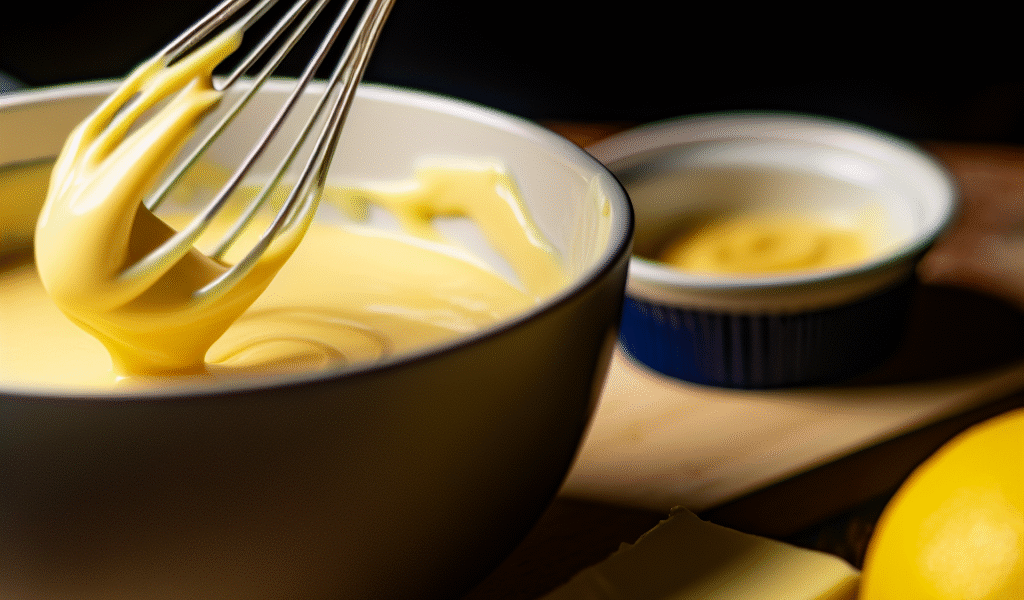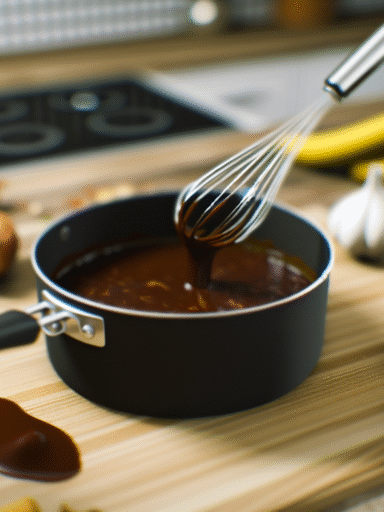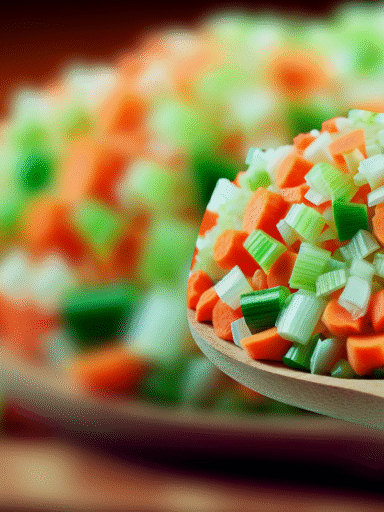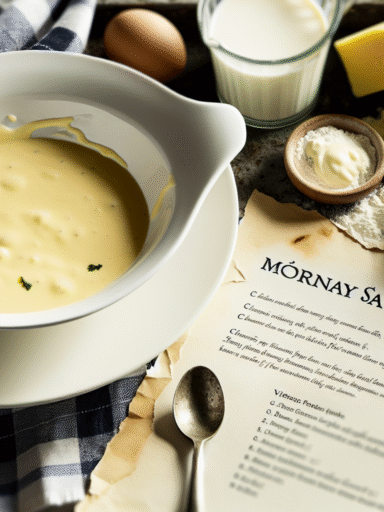Hollandaise
If buttery, velvety sauces make your heart race, you’re in for a treat. Hollandaise, a classic French mother sauce, is the golden, tangy emulsion that can elevate simple dishes to something truly special. Whether draped over eggs Benedict or steamed asparagus, this luscious sauce brings a touch of elegance with every spoonful.
Tags / Categories
- Flavor Profile: Buttery, tangy, rich
- Main Ingredients: Egg yolks, clarified butter, lemon juice
- Region: French cuisine
- Usage: Breakfast dishes, seafood, vegetables, sauces
Quick Info Box
- Prep Time: 10 minutes
- Cook Time: 5–7 minutes
- Total Time: 15–17 minutes
- Difficulty Level: Intermediate (requires gentle temperature control)
- Yield: About 1 cup (4 servings)
Ingredients List
- 3 large egg yolks
- 1 tablespoon fresh lemon juice (about half a lemon)
- 1/2 cup (1 stick) clarified butter, warm
- Pinch of cayenne pepper (optional)
- Salt, to taste
- 1 teaspoon warm water (optional, for adjusting consistency)
Making the Perfect Hollandaise: Step-by-Step
Let’s be honest: Hollandaise can seem intimidating, but with a bit of patience and a steady hand, you’ll be rewarded with a silky, dreamy sauce. Here’s how you nail it:
- Set up a gentle double boiler. Fill a saucepan with an inch or two of water and bring it to a gentle simmer. Pour the egg yolks and lemon juice into a heatproof bowl (glass or stainless steel works best) and place it over the pan—making sure the bowl doesn’t touch the water.
- Whisk constantly. Now, here’s the trick: vigorously whisk the yolks and lemon juice together. You want them to thicken slightly and get a bit lighter in color. Your arm might get a little workout, but it’s worth it!
- Slowly drizzle in the clarified butter. This part is key: add the warm clarified butter drop by drop at first, whisking continuously. Once the sauce starts to come together and thicken, you can add the butter in a slow, steady stream. The butter is what creates the magic of an emulsion, so if you pour too fast, it might split.
- Season and adjust. Taste your sauce—add salt and a pinch of cayenne pepper for a subtle kick. If the sauce feels too thick, whisk in a teaspoon of warm water to loosen it up. Don’t stress if the texture isn’t perfect on the first try; a quick whisk usually saves the day.
- Keep warm until serving. Hollandaise doesn’t like intense heat, so keep it in a warm spot but not on direct heat, and whisk occasionally to keep it smooth.
Serving Suggestions
This sauce is versatile, and once you get the hang of it, you’ll want to spoon it onto all the things:
- Classic eggs Benedict: Poached eggs on English muffins with Canadian bacon, topped with Hollandaise – brunch bliss.
- Steamed asparagus or green beans: A drizzle of Hollandaise brings veggies from simple to spectacular.
- Grilled or baked salmon: The buttery tang complements seafood beautifully.
- Steak or roasted potatoes: For a rich, elegant touch to your protein or sides.
Origin & History
Though seemingly Dutch by name, Hollandaise actually originated in French cuisine during the 17th century. Its name pays homage to the “Holland sauce” or butteriness akin to Dutch butter. It gained fame through classic French cookbooks, including those by Auguste Escoffier, solidifying its place as one of the five mother sauces. It embodies classic French technique—simple ingredients transformed through expert emulsion.
Variations & Substitutions
- Adding herbs: Try stirring in fresh tarragon or chives at the end to create a herby Béarnaise-inspired twist.
- Vegan adaptation: Swap egg yolks for a blend of silken tofu and a pinch of turmeric for color; use vegan butter or olive oil, and lemon juice as usual.
- Spice it up: Smoked paprika, a hint of Dijon mustard, or even a splash of white wine vinegar can change the flavor profile impressively.
Storage & Make-Ahead Tips
Hollandaise is best fresh. But if you need to make it ahead:
- Store in an airtight container in the fridge for up to 24 hours.
- Reheat gently over a double boiler or in a warm water bath, whisking constantly to bring it back to life without scrambling the eggs.
- Avoid freezing—the emulsion is delicate and can separate.
Nutritional Information (approximate per 1/4 cup serving)
- Calories: 210 kcal
- Fat: 22 g
- Protein: 2 g
- Carbohydrates: 1 g
- Sodium: 100 mg
Related Sauces / Try Next
- Béarnaise Sauce – A tarragon- and shallot-infused twist on Hollandaise.
- Lemon Butter Sauce – Simpler, lighter, perfect for fish.
- Mousseline Sauce – Hollandaise enriched with whipped cream for extra fluffiness.
FAQ
Q: What if my Hollandaise sauce breaks or curdles?
A: It happens to the best of us! Try whisking in a teaspoon of warm water slowly to bring it back together. For stubborn separations, start with a fresh egg yolk in a clean bowl and whisk the broken sauce in slowly as if you were starting anew.
Q: Can I make Hollandaise without clarified butter?
A: While clarified butter gives that pure buttery fat needed for stable emulsions, you can use melted unsalted butter cautiously. Simmer it gently to remove moisture, but be watchful for any milk solids, which can impact texture.
Q: How do I keep Hollandaise warm without it breaking?
A: Keep it over a warm water bath—not direct heat—and stir or whisk often. Alternatively, leave it in a warm thermos or serve immediately. The key is gentle heat and patience.
Hollandaise is one of those sauces that, once you master it, becomes a kitchen superstar. Its delicate balance of rich butter and bright lemon can lift everyday meals into something worth savoring. So go ahead, whisk away, and enjoy the magic of homemade Hollandaise—it’s worth every drop.



